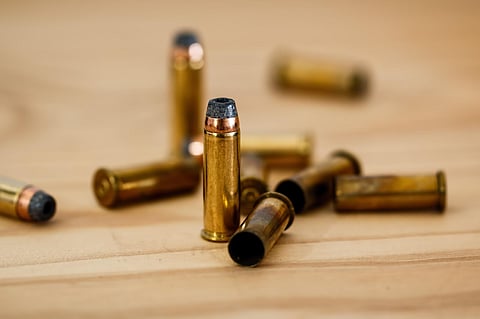

Reading about the deductive prowess of Sherlock Holmes or Hercule Poirot, the reader is riveted by the protagonist rummaging through heaps of circumstantial evidence, statements of suspects, and motives to nab the culprit or culprits. In cases where a firearm roars, the reader forgets that the bullet and the firearm should be traced back to the accused, and this is where ballistic experts arrive at the scene.
There could be a bullet shell, gunshot residue, and in some cases, the weapon itself. In this branch of forensic science, ballistic experts have the onerous task of giving the sleuths some leads from a smidgen of evidence. Ballistic is the study of projectiles in flight; the word is derived from the word ballein, meaning ‘to throw’.
Experts have to provide an opinion as to whether the ammunition components may be linked to the weapon which discharged them, establishing a range of fire, identifying entry and exit wounds, interpreting damage caused by gunshots, and examining the mechanical conditions of the firearms.
As the cartridges are ejected, and the bullet is lodged either in the body or on some surface, experts use microscopy to examine the markings found on fired ballistic material. The principles of this technique were formally established in 1969 by the Association of Firearm and Tool Mark Examiners in the US. When it goes off, a firearm leaves distinct marks, like DNA, on the cartridge cases and bullets.
The traits of the firearm are passed on to the bullets and cartridges when they come in contact with the parts of the firearm. The examiner analyses the ballistic materials-cartridge and bullets recovered from the crime scene - and tries to ascertain initially the type of weapon. Like any organism, weapons bear class characteristics, which is a series of “family” resemblances in the weapon of the same make or model as a result of design factors of the gun, sub-class characteristics reveal how certain features introduced during manufacturing can change over time and usage, and unique characteristics which are randomly occurring features.
The primary marks on the fired cartridge cases come from the firing pin, the breech face of the gun, the ejector, and the extractor. As a bullet travels through the barrel, the rifling inside produces either a left or right twist and consists of the number of lands or grooves, which contributes to the identification of the weapon. If a firearm is recovered from the crime scene, experts test-fire it to match the cartridges, bullets, and individual characteristics. Dr Calvin H Goddard, who had developed a childhood fondness for firearms, earned the sobriquet as the Father of Ballistics, for pioneering the technique that could link the bullet to the firearm.
In 1925, Goddard and colleagues CE Waite, Phillip O Gravelle and John H Fisher established the Bureau of Forensic Ballistics in NYC. Gravelle, under Goddard’s supervision, developed the comparison microscope. In 1929, gangster Al “Scarface” Capone used his mole in the rival Moran gang to deceive them into believing that a bootleg whiskey shipment would arrive on February 14. When seven people arrived at a garage, four of Capone’s men, including two disguised as policemen, waited till the last member was inside the garage.
They were lined up and sprayed with bullets. Chicago coroner Herman Bundesen requested Goddard to study the crime scene evidence. He concluded that one 12-gauge shotgun and two Thompson submachine guns were used in the liquidation, and the submachine guns had 50-round and 20-round drum magazines. He refuted that Chicago-police-issued Thompson submachine guns were used.
While searching the house of a Capone hood, police recovered two Thompson submachine guns and ammunition clips. Goddard test-fired the weapons and concluded that the guns were involved in the St. Valentine’s Day Massacre. When there are no eyewitnesses, ballistic forensics can incontrovertibly connect the crime and the criminal.